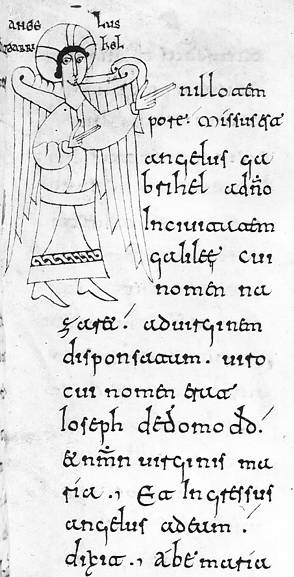Script Type : minuscule
Date : late 7th to 12th centuries
Location : Spain
Function : book hand

(This example is featured in Brown 1990.)
























Distinctive letters : The letter t is the trick one here, being small with a loop on the back, making it look rather like an a. However, a is open at the top. There are two forms of d, one with a backsloping ascender and the other upright and strrongly wedged, as are b and l. There are also two forms of e, the more common being open and taller than the other small letters. A capitalised form of i is used when it comes at the beginning of a word. The letters g and q could be confused, the former being open at the top with a straight descender, while the descender of q curls to the left. x and z are rather extravagant in form the latter only appearing in the proper noun Nazareth. u and v are identical, as usual.
There is no j or k in this example, and naturally, no w.
The letter b is substituted for v in the word ave (abe Maria).
The presence of ligatures, abbreviations and some eccentric word and line spacing makes reading this a bit of a puzzle, even though the letters are well spaced and clearly formed.
Pass the cursor slowly over the lines of text for some hints at decoding it. To look at the tet in more detail, proceed to the paleography exercises.
Paleography
exercises using Flash![]()
Requires at least the Flash 5 plugin
If you are looking at this page without frames, there is more information about medieval writing to be found by going to the home page (framed) or the site map (no frames).